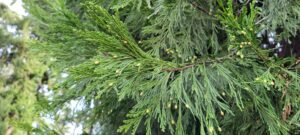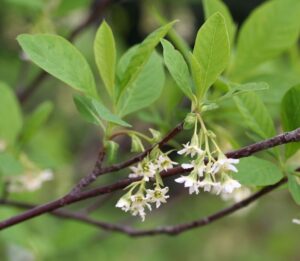Spring is coming! Or is it already here?
The Eugene Team shares their favorite signs of springtime
“Many buds are starting to swell,” Erik Burke says when asked when spring will arrive. “Witch-hazel, Persian ironwood and osoberry are all insect-pollinated woody plants that are blooming. Spring is here.”
The Eugene Director has always noted that the seasons aren’t evenly distributed in Western Oregon and Southwest Washington. “We have a short autumn, a relatively short winter, and long springs and summers. November is our wettest month on average, January is our coldest month, and while February can be cold, spring typically begins early in the month.”
Meteorologists observe March 1st as the first day of spring. Our calendars say March 19, the vernal equinox, when the days finally begin to be longer than the nights. But plants are on their own schedule.

“It’s a gradual roll out,” Erik says. We’ll see camas come out of the ground in December or early January as the incense cedar starts blooming. Filberts pollinate in January, and in February, we’re seeing willows leafing out, and daffodils and cottonwoods blooming.
“When the cottonwood buds drop on the bike path, it’s the best smell ever,” Erik says. “And in March, our native wildflowers are just beautiful.”
Some ecologists point to osoberry blooming as the first sign of spring, because it’s the first native insect-pollinated woody plant to bloom, and blooms with or just after the introduced witch-hazel and Persian ironwood.
“I love when the forest edges are covered in osoberry blooms,” says Taylor, our Eugene-Springfield Program Manager “I love that the days are getting longer faster. I love seeing the native bulbs lush and thriving.”

Spring is when we see the most pollen from the wind-pollinated trees that cause allergies. But luckily, it’s during the rainy season, and rain will knock a lot of those allergens out of the air. Incense cedar is the first to put out its pollen, followed by filbert, cottonwood, alder, birch, and hornbeam. Ash and oak follow in April.
Our early spring allows for most trees and plants to wrap up their reproductive processes by May, ahead of our annual summer drought. Until then, we get to enjoy the kaleidoscope of blooms in our canopy, across our hillsides, and in our own yards and gardens.

